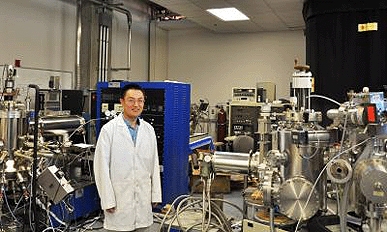The device is based on the principles of resistive memory, which can be used to create memory cells that are smaller, operate at a higher speed and offer more storage capacity than flash memory cells, the current industry standard.
According to a statement, the key advance in the UC Riverside research is the creation of a zinc oxide nano-island on silicon that eliminates the need for a second element called a selector device, which is often a diode.
‘This is a significant step as the electronics industry is considering wide-scale adoption of resistive memory as an alternative for flash memory,’ said Jianlin Liu, a professor of electrical engineering at UC Riverside who is one of the authors of a paper detailing the research in Scientific Reports. ‘It really simplifies the process and lowers the fabrication cost.’
Flash memory has been the standard in the electronics industry for decades. But, as flash continues to get smaller and users want higher storage capacity, it appears to reaching the end of its lifespan, Liu said in a statement.
Resistive memory is receiving significant attention from academia and the electronics industry because it has a simple structure, high-density integration, fast operation and long endurance. Researchers have also found that resistive memory can be scaled down in the sub 10-nanometer scale.
Resistive memory usually has a metal-oxide-metal structure in connection with a selector device. The UC Riverside team has demonstrated a novel alternative way by forming self-assembled zinc oxide nano-islands on silicon.
Using a conductive atomic force microscope, the researchers observed three operation modes from the same device structure, essentially eliminating the need for a separate selector device.
The paper - Multimode Resistive Switching in Single ZnO Nanoisland System - is co-authored by Jing Qi, a former visiting scholar in Liu’s lab and now an associate professor at Lanzhou University in China; Mario Olmedo, who earned his Ph.D. from UC Riverside and now works at Intel; and Jian-Guo Zheng, a director of the Laboratory of Electron and X-ray Instrumentation at UC Irvine.





Red Bull makes hydrogen fuel cell play with AVL
Surely EVs are the best solution for motor sports and for weight / performance dispense with the battery altogether by introducing paired conductors...